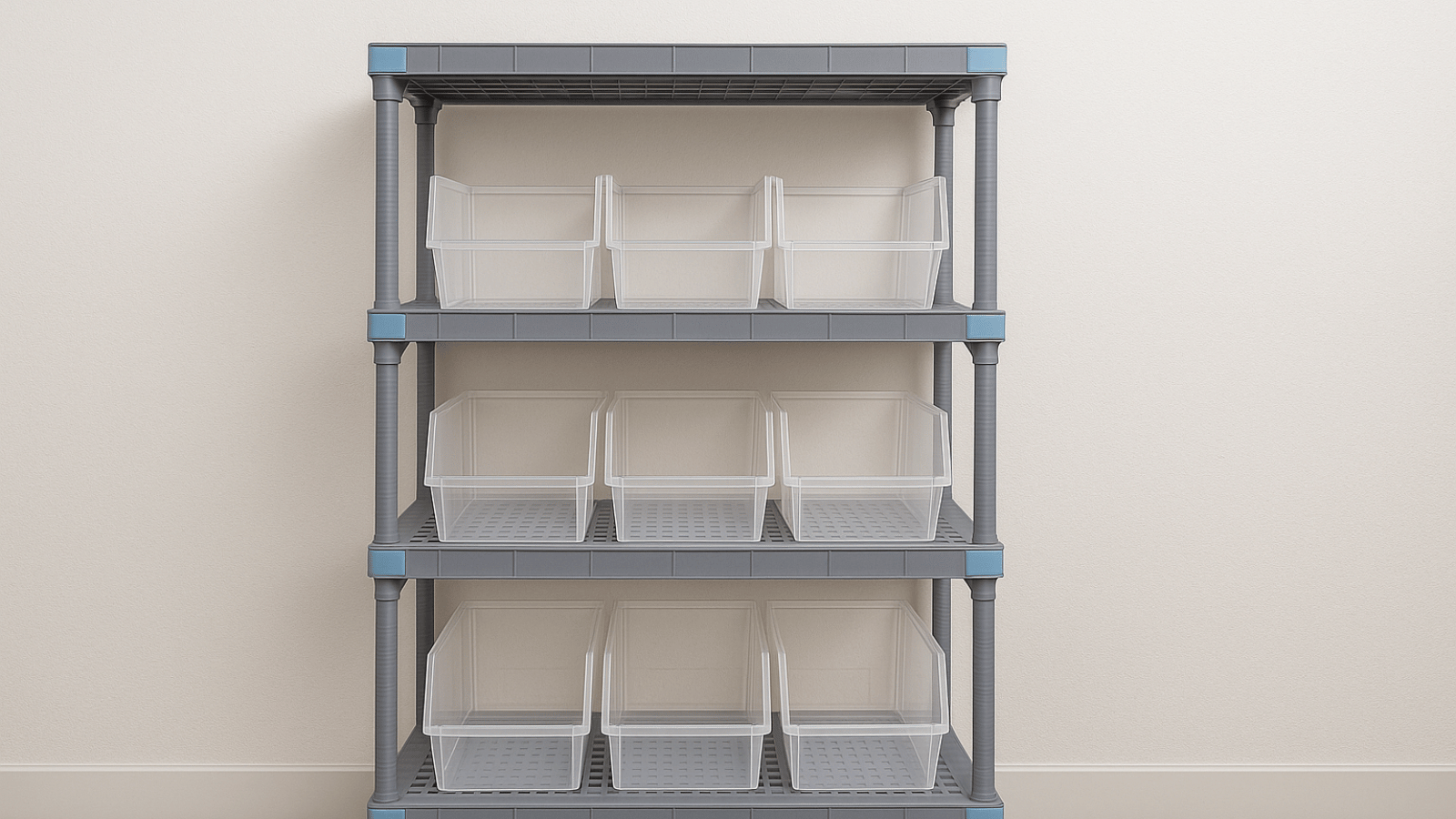How to Design a Dry Storage Area That Works

Dry storage in commercial kitchens can sometimes become an afterthought. It is not flashy, it is not high-tech, and it is not where the action happens. But neglect it for too long, and the consequences can show up quickly. From spoiled goods to inspection failures, a poorly designed dry storage area can quietly undermine the efficiency and safety of the entire operation.
For foodservice operators in Florida, where heat and humidity present additional challenges, dry storage is not just a back-of-house detail. It is a key element in maintaining cleanliness, organization, and health code compliance.
Why Millenia Shelving Is a Game-Changer for Florida Kitchens
Florida kitchens face unique challenges, from coastal humidity to tropical temperatures to partially open-air environments. Based in Miami, Quantum designed the Millenia Shelving line is specifically designed for demanding conditions, including damp and hot. Its rust-resistant, polymer-coated frame stands up to moisture, while the structure provides reinforced durability for high-traffic spaces.
Millenia Shelving offers tool-free adjustability, allowing operators to reconfigure storage layouts quickly as menu items or inventory levels change. Its mold-resistant materials and corrosion-resistant design make it ideal for foodservice operations that need long-term reliability and easy compliance with health codes. For kitchens looking to upgrade their dry storage, Millenia offers both practicality and performance.
Dry storage might be out of sight, but it should never be out of mind. With the right equipment and well thought out layout, foodservice professionals in Florida can create dry storage areas that support efficiency, safety, and long-term success.
Why “Out of Sight” Shouldn’t Mean “Out of Mind”
In schools, QSRs, sit-down restaurants, and healthcare facilities, overcrowded shelves, inconsistent product placement, and poor food rotation snowball into many problems. That’s because it can lead to clutter, confusion, and operational inefficiencies. In Florida, the hot and humid climate compounds the problem, creating an ideal environment for pests and moisture-related damage.
Health inspectors do not overlook dry storage. Local regulations require businesses to store food off the floor and away from walls to allow proper air circulation. Without the right shelving and layout, operators risk falling out of compliance. A poorly managed dry storage area can lead to product loss, safety hazards, and failed inspections that disrupt business.
Elevate and Ventilate with the Right Shelving
Airflow is essential in dry storage. Without proper ventilation, moisture builds up, air becomes stagnant, and the risk of contamination increases. Quantum Foodservice offers open-wire shelving solutions, including chrome and epoxy-coated models, that allow air to move freely around stored items. These designs help prevent mold and make it easier to maintain cleanliness.
contamination increases. Quantum Foodservice offers open-wire shelving solutions, including chrome and epoxy-coated models, that allow air to move freely around stored items. These designs help prevent mold and make it easier to maintain cleanliness.
Quantum’s shelving systems are NSF-approved, meaning they meet strict safety and sanitation standards. In a state like Florida, where humidity is always a concern, choosing humidity resistant wire shelving is a proactive step toward safer, longer-lasting storage. These systems also simplify daily cleaning and help staff work more efficiently.
Get in Line with Labeling Systems & FIFO Compliance
An organized dry storage system supports better food safety and inventory management. Following a FIFO (First-In, First-Out) rotation strategy reduces waste, ensures ingredients are used before their expiration dates, and keeps allergen control in check. However, without proper labeling and visibility, maintaining FIFO can be difficult.
Quantum provides storage bins, label holders, and dividers that streamline organization and access. These tools help staff quickly identify products and categories, which is especially helpful for training new team members. Efficient labeling not only minimizes waste but also speeds up daily tasks and reduces the chances of errors during busy service hours.




